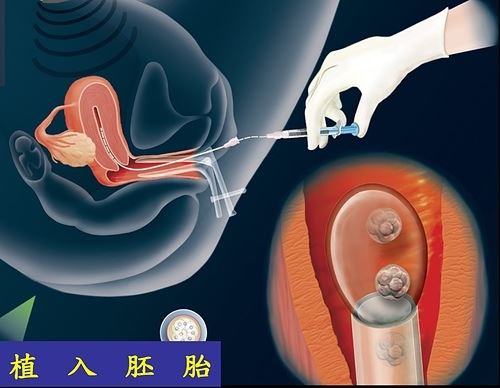Three to five days after the egg (oocyte) retrieval you will be scheduled for your embryo transfer. Your physician will recommend which day is most appropriate for you. In general, blastocyst transfer is recommended when there are a large number of embryos of good quality, or for couples desiring only a single embryo to be transferred. Your physician will give you a recommendation regarding the number of embryos to be transferred based on your age, your history if you have had in vitro fertilization (IVF) performed in the past, and the quality of the embryos.
Abdominal ultrasound is used to guide the transfer. To perform the transfer, your physician will place a speculum in the vagina and the cervix will be rinsed with a sterile solution. The embryologist in the IVF Lab will load the embryos into a small catheter and your physician will ease the tip of the catheter through the cervix into the uterus. You may have a sensation or twinge as the catheter passes through your cervix or you may not feel anything. For this reason, anesthesia is not used for the transfer.
On the day of your transfer wear comfortable clothing and socks to keep your feet warm. Your bladder should feel full, but not very uncomfortable. A partially full bladder often will allow the transfer to be completed more easily and will allow a better picture on the abdominal ultrasound.
What are the next steps after embryo transfer?
We suggest that you rest the day after the transfer, to allow yourself time to relax as much as possible. Also, your ovaries will still be enlarged and activity should be minimized as described above to prevent ovarian discomfort. However, it is important to know that nothing you will do, such as walking or going to the bathroom will cause the embryos to dislodge from the uterine wall. The main factors that determine whether an embryo will implant are the viability (“health”) of the embryo and the quality of the uterine lining. Healthy embryos will be much more likely to implant and develop than embryos which are not viable.


 繁體中文
繁體中文 日本語
日本語 한국어
한국어 简体中文
简体中文